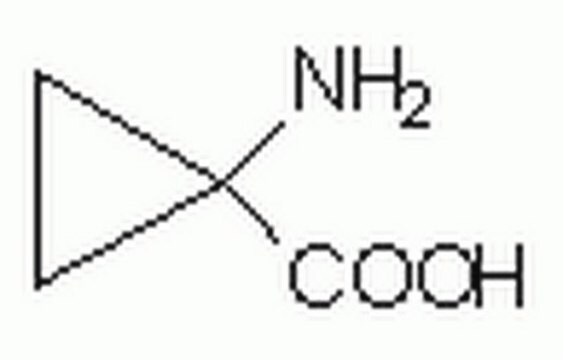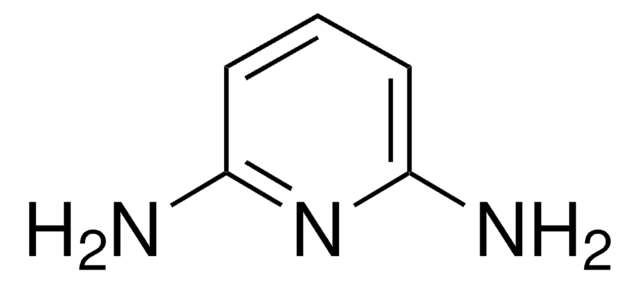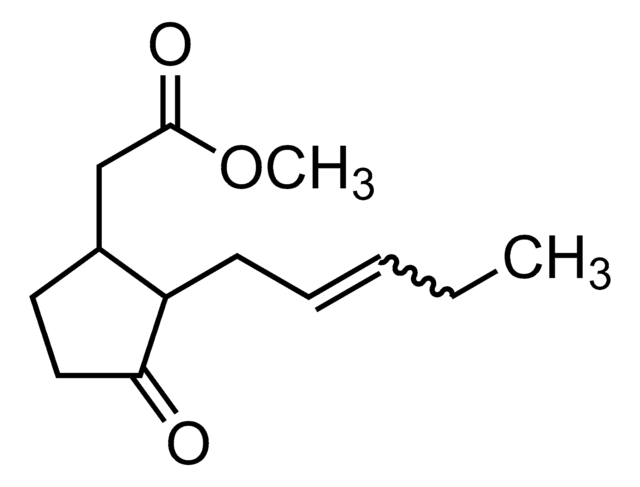A3903
1-Aminocyclopropanecarboxylic acid
≥98% (TLC), powder, NMDA agonist
Sinônimo(s):
ACC, ACPC
About This Item
Produtos recomendados
Nome do produto
1-Aminocyclopropanecarboxylic acid, ≥98% (TLC), powder
Nível de qualidade
Ensaio
≥98% (TLC)
Formulário
powder
condição de armazenamento
(Keep container tightly closed in a dry and well-ventilated place.
Keep in a dry place.)
cor
white
pf
229-231 °C (lit.)
solubilidade
water: 49.00-51.00 mg/mL, clear, colorless
cadeia de caracteres SMILES
NC1(CC1)C(O)=O
InChI
1S/C4H7NO2/c5-4(1-2-4)3(6)7/h1-2,5H2,(H,6,7)
chave InChI
PAJPWUMXBYXFCZ-UHFFFAOYSA-N
Informações sobre genes
human ... NARG2(79664)
mouse ... NARG2(93697)
rat ... LOC686240(686240) , NARG2(691379)
Procurando produtos similares? Visita Guia de comparação de produtos
Descrição geral
1-Aminocyclopropanecarboxylic acid (ACC) is a non-proteinogenic amino acid and is a member of 1-aminocycloalkanecarboxylic acids.
Aplicação
Ações bioquímicas/fisiológicas
anticorpo
produto relacionado
Código de classe de armazenamento
11 - Combustible Solids
Classe de risco de água (WGK)
WGK 3
Ponto de fulgor (°F)
Not applicable
Ponto de fulgor (°C)
Not applicable
Equipamento de proteção individual
dust mask type N95 (US), Eyeshields, Gloves
Escolha uma das versões mais recentes:
Já possui este produto?
Encontre a documentação dos produtos que você adquiriu recentemente na biblioteca de documentos.
Os clientes também visualizaram
Nossa equipe de cientistas tem experiência em todas as áreas de pesquisa, incluindo Life Sciences, ciência de materiais, síntese química, cromatografia, química analítica e muitas outras.
Entre em contato com a assistência técnica










